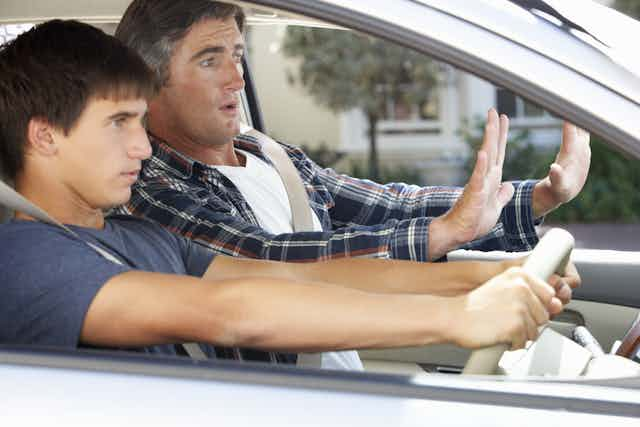Victoria is currently the only Australian state where the earliest opportunity for unsupervised driving is 18. The minimum age is 17 in all other states and territories, except the Northern Territory (16 years and six months).
This disparity prompted a Victorian parliamentary inquiry to investigate the possibility of lowering Victoria’s probationary driving age to 17. After hours of hearings and hundreds of submissions, the state government decided to extend the date the inquiry will report from November 2016 to March 2017.
The inquiry was prompted by concerns that the high licensing age is contributing to youth unemployment, especially in regional areas. But if a reduction in Victoria’s youth unemployment rate is what is wanted, lowering the state’s driving age to 17 is not the way to achieve it.
Michael Byrne (a recent graduate of Monash University) and I analysed data from the most recent Australian Census, in 2011. We found there is no evidence to suggest the existing 18-year-old probationary driving age is linked to a high youth unemployment rate in Victoria.
Unemployment rates across Australia
According to census data, 82% of people used a car to travel to work in 2011. The argument is that setting the minimum driving age at 18 is putting Victorian 17-year-olds at a disadvantage compared to 18-year-olds who can potentially drive to job opportunities.
If this was the case, then in Victoria there should be a higher unemployment rate for 17-year-olds than 18-year olds. And 17 year-olds in Victoria (especially in regional areas) should have a higher unemployment rate than 17-year-olds elsewhere in Australia.
Not all 17-year-olds are looking for work; many are still in school. And perhaps not being able to drive is discouraging Victorians from seeking a job in the first place. 41% of 17-year-olds in Victoria are working or seeking work, similar to New South Wales (39%) and Northern Territory (41%).
The unemployment rate among teenagers who are trying to find work is dismally high, ranging from 11% to 18%. But the unemployment rate was actually higher for 18-year-olds in Victoria than 17-year-olds. And Victoria’s percentage of unemployed 17-year-olds (14%) was actually one of the lowest in Australia – lower than New South Wales (15%), the Northern Territory (17%), Queensland (16%), South Australia (14%) and Tasmania (18%).
There are important differences between Victoria and the rest of Australia beyond the licensing age. Victoria is far less remote than other states, which means fewer teenagers are dependent on a car to get to work. So, we used the Australian Bureau of Statistics’ classification of regions as either urban, regional or rural to compare 17-year-old unemployment rates for different regions.
Even so, we found that Victorian 17-year-olds in regional areas had the equal lowest unemployment rates of any regional area (tying with Western Australian regional areas at 11%). In all other states and territories, 17-year-olds in regional areas had higher unemployment rates.
Perhaps economic conditions in Victoria, especially regional areas, are more favourable than other states. We ran a regression model to predict the greatest cause of unemployment for 17-year-olds. Indeed we found the most significant predictor of 17-year-old unemployment was the overall unemployment rate.
In the end we found no evidence, at the macro level, that a higher driver licensing age in Victoria has resulted in higher unemployment rates for 17-year-olds. A teenager’s success in securing a job is dependent on a range of social and economic factors beyond when someone can first get a driving licence.
Safety implications of a change
These findings do not negate the very real experience of individuals in regional areas who are struggling to find a job. It does not mean that their struggles do not exist or that they do not matter.
But driver licensing policy is not just about individuals; its impacts are felt across all of society. So, we must weigh potential economic benefits against potential road safety consequences.
The safety implications of lowering the licensing age have been examined extensively by experts – including VicRoads, Transport and Road Safety Research (NSW), the Australasian College of Road Safety, the National Transport Commission, and the Transport Accident Commission (TAC).
Each of these submissions did not recommend changing the driving age, because of the significant increase in road trauma and death that would result.
The TAC has found that if the licensing age is reduced to 17, every year there will be an additional ten deaths, 235 serious injuries and 700 other injuries on our roads, as well as A$243 million in community costs.
This burden will fall disproportionately in rural areas, where someone is more than four times more likely to die on the road than in a city.
For a young person, the ability to drive a car brings with it increased mobility and a wider range of potential employment opportunities. Yet our work suggests that on the whole, there is little to gain and much to lose from reducing the driver licensing age in Victoria.

